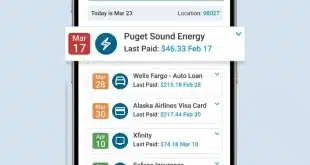The automated clearing house system will account for more than one-fifth of all consumer bill payments by 2007, thanks to dramatic growth in the conversion of checks sent to billers' lockboxes into electronic ACH transactions, according to a new study from consulting firm TowerGroup, Needham, Mass. This conversion, known as accounts receivable conversion, or ARC, has grown explosively in the past year as insurers, card companies, utilities, and other billers increasingly adopt it as a means of cutting check costs, speeding up cash flow, and acting sooner on returned items. The National Automated Clearing House Association, the Herndon, Va.-based organization that establishes operating rules for the ACH, estimates that ARC volume reached 1.25 billion last year, including on-us volume, up from 220 million in 2003 and 24 million in 2002, the first year the application was available. NACHA has said that ARC is the fastest-growing payment application in ACH history. TowerGroup expects that torrid growth rate to continue, at least for the near term. Analyst Beth Robertson projects that ARC transactions will grow to 1.8 billion this year and will hit 4.68 billion in 2007. Whereas ARC accounts for just over 6% of all consumer bill payments today, that proportion will expand to 8.6% in 2005 and to 21.1% in less than three years, she predicts. Although alternative payment methods, including credit and debit cards and online bill payment, may moderate ARC's growth rate somewhat as consumers pay more bills with cards and on the Web, the impact on ARC will not be dramatic, she argues, for the next few years. Nor will the nascent image-exchange networks, which allow banks to trade digital images of checks rather than the paper itself, likely cut into ARC's growth rate any time soon, as they are still experimental networks for most banks, she says. Still, other research has predicted a cloudier future for ARC. A report released last November by Celent Communications, for example, predicts that ARC will begin declining in 2008, largely because of image exchange, and will become a “marginal item” on the ACH by 2010 (Digital Transactions News, Nov. 10, 2004). ARC conversion costs billers about 2 cents per item, compared to 14 to 20 cents to process each each check collected at a lockbox. But another key reason for ARC's supercharged growth, Robertson says, is that it requires billers only to offer a periodic opt-out notice to consumers, a requirement they generally meet with messages on their monthly statements. The other major ACH application that converts paper checks, point of purchase or POP, requires consumer authorization for each transaction, and has grown much more slowly. With the opt-out provision, billers can convert transactions in bulk once they adopt ARC. “The opt-out enables companies rather than consumers to make the decision about conversion and brings a lot of volume to the table at one time rather than a one-off transaction,” Robertson says. Indeed, in her study, she recommends that merchants that have adopted POP or are investigating ACH conversion at the point of sale consider shifting the application from the checkout lane to a back office, thus emulating ARC by offering a periodic opt-out to consumers and converting checks in bulk. She acknowledges this would require an ACH rules change, since current rules require that checks be received in remittance lockboxes to be eligible for ARC. NACHA has under consideration a new application, provisionally called BOC or back-office conversion, that would allow merchants to perform bulk conversion of consumer checks received in their stores (Digital Transactions News, Sept. 30, 2004) with an opt-out provision similar to that in the rules for ARC.
Check Also
CFPB Sues Walmart, Branch and other Digital Transactions News briefs from 12/23/24
The Consumer Financial Protection Bureau has sued Walmart Inc. and Branch Messenger Inc. over allegations of fees …




